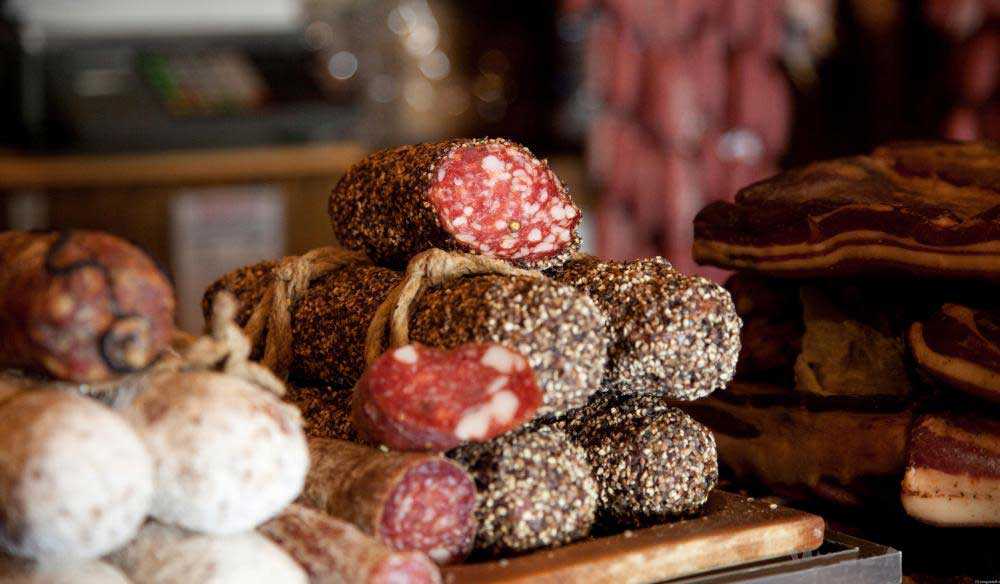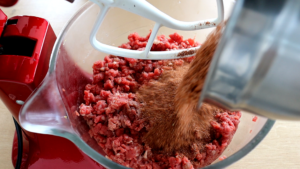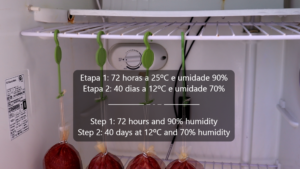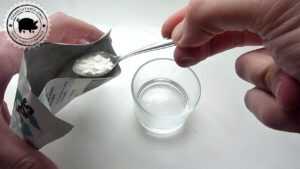
Salami and other aged sausages do not undergo heat treatment to eliminate pathogens. Fermentation is required because it is an important additional barrier to the safety of these products. There are pathogens that can cause problems, such as Listeria monocytogenes, Salmonella spp., Escherichia coli (STEC), Clostridium botulinum, Clostridium perfringens and Staphylococcus aureus.
Microbiological quality must always start with obtaining good meat and using Good Manufacturing Practices. In addition to fermentation, more detailed below, always use all protective barriers, including:
Salting and seasoning
Salt controls the growth of bacteria present in the raw material, creating a favorable environment for the growth of the desired bacteria, those in the starter culture. Some condiments also have a protective function, garlic, onion, peppers, etc.
Cure
Especially in this type of product, it is very important to add the curing salt with nitrite and nitrate, as it is very effective against the growth of Clostridium botulinum and Clostridium perfringens. Due to the prolonged curing time of fermented sausages, in addition to nitrite, it is recommended to use sodium nitrate. Want to know more about curing salt? Read the post Curing salt what it is and how much to use
Fermentation
It is a very important step to control the growth of different microorganisms and obtain a safe product. It is important to add a good bacterial starter culture for fermentation of salami and other sausages. The acid-lactic bacteria (LAB) present ferment the carbohydrates in the meat mixture, increasing the acidity. It is very important that the pH drop is rapid, as some pathogenic bacteria, such as Salmonella spp., can become tolerant to acidity during a slow pH drop. Reducing pH also offers safety by reducing the water retention capacity of the meat and providing the appropriate environment for the development of micrococci, which are responsible for the production of nitrate/nitrite reducing enzymes.
As it is important that fermentation occurs quickly, the first hour of fermentation is carried out in a warmer and very humid environment, close to 25ºC and 90% humidity. This step usually takes between 48 and 72 hours.
Drying/Maturation
The product loses water and, by removing moisture, the water activity (aw) is reduced, which inhibits the growth of pathogens. The more water, the more conducive the environment for pathogens to grow. The drier the salami, the more protected it is.
Environment
After fermentation in a warmer environment, you need to hang the salami, cup or other fermented sausage in an environment with the lowest temperature and light and constant air circulation. As a general rule, it is necessary to keep the environment close to 12ºC, humidity around 80% and constantly maintain slight air circulation. Each product may require variations, but this is the general rule applied to most products. It is important to be able to maintain an environment under these conditions throughout the drying/maturation period.
Starter culture
The use of starter cultures in the preparation of fermented sausages dates back to the 1950s, when the first commercial starter culture was introduced in the United States and was based on a strain of Pediococcus acidilactici. Nowadays, a starter culture is a mixture of microorganisms that constitute an essential part of the fermented sausage formulation and help to properly control its fermentation and maturation. The microorganisms in the starter culture compete with those present in the meat mixture, controlling fermentation and eliminating unwanted microorganisms.
Biotechnology evolution has brought a new generation of starter cultures that offer not only protection through acidification, but, in addition, improvements in one or several qualities of the fermented sausage, which are functional cultures.
We have acidolactic bacteria, among which the most used are: Lactobacillus curvatus, Lactobacillus plantarum, Lactobacillus sakei, Pediococcus acidilactici and Pediococcus pentosaceusi. The second most important group are catalase-positive gram-positive cocci bacteria and are composed of staphylococci such as Staphylococcus carnosus and Staphylococcus xylosus.
To get the most out of fermentation, it is important to use a stater culture that has a variety of strains.
The external protection of fermented sausages, the famous white coating, is also an important protective agent, to find out more, read the post Mold on salami and other sausages






